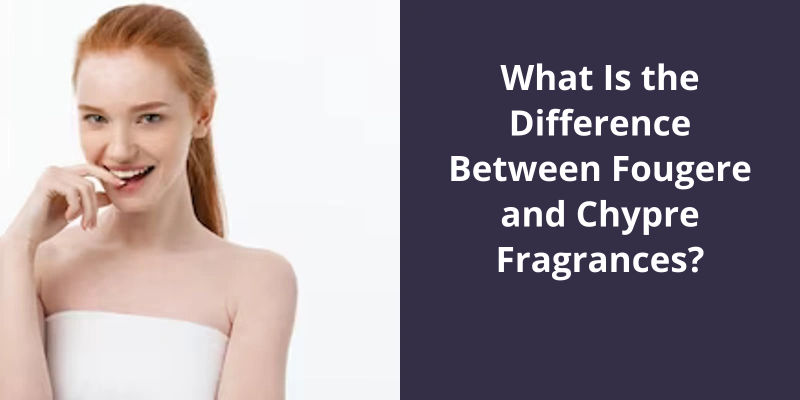Fougere and Chypre are both classifications of fragrances that are distinguished by their unique scent profiles. Fougere fragrances are typically characterized by their fresh, clean, and somewhat herbaceous scents, resulting from a blend of lavender, oakmoss, and coumarin. This makes them perfect for daywear or casual occasions. On the other hand, Chypre fragrances carry a more distinct and sophisticated scent. They are typically warmer and earthier due to their combination of fresh citrus top notes, a middle note of labdanum, and a mossy-animalic set of base notes including oakmoss and musk; making them a superb choice for a night out or a formal event.

What Is Fougere and Chypre?
Chypre, however, is a more complex perfume family with a wide range of ingredients that provide a rich and sophisticated fragrance. The word chypre is derived from the French word for Cyprus, where the first chypre fragrance was created by Francois Coty in 19A chypre fragrance typically has a citrus top note, a floral heart note, and a woody base note, often made up of oakmoss, labdanum, and patchouli. It’s a popular choice for mens fragrances, but also appeals to women who prefer it’s earthy, forest-like aroma.
Fougere, on the other hand, is named after the French word for fern. It’s main components are lavender, oakmoss, and coumarin, which give it a clean, earthy aroma with a slightly sweet undertone. Fougere is often used as a base note in fragrances, adding depth and richness to other scents.
Many perfumes today combine elements of both chypre and fougere fragrances to create unique blends that appeal to a wide range of tastes. Both scent families have their own unique appeal and can be used to create a memorable and distinctive aroma.
The History of Fougere and Chypre in Perfumery
Fougere and Chypre are two classic scent families in perfumery. Fougere is a fresh, herbaceous scent with notes of lavender, oakmoss, and coumarin. Chypre, on the other hand, is a woody, mossy scent with notes of bergamot, oakmoss, and labdanum. Both scent families have a rich history in perfumery, with Fougere originating in the 19th century and Chypre in the early 20th century. Despite their age, these scent families remain popular in modern perfumery.
When it comes to describing the different scents found in fragrances, there are various olfactive families used to categorize them. One of the most popular and well-known of these families is the fougère fragrance. But what exactly does this term mean? Let’s take a closer look.
What Is the Meaning of Fougere Fragrance?
Fougere fragrance is a type of scent that’s often described as a blend of fresh, green, and slightly woody notes. This type of fragrance is very popular in the world of perfumery and is used in many different types of perfumes, colognes, and other fragrances.
History and Evolution of Fougere Fragrance
Fougere fragrance is a popular perfume category that originated in the 19th century in France, with the release of the first-ever fougere fragrance “Fougere Royale” by Houbigant. Fougere fragrances typically contain notes of lavender, oakmoss, and coumarin. Over the years, the fougere fragrance has evolved to include more modern and diverse notes while still maintaining it’s classic scent profile. Today, fougere fragrances remain a popular choice among perfume enthusiasts.
Conclusion
While both incorporate similar ingredients such as oakmoss, musk, and bergamot, fougere scents are typically dominated by notes of lavender and coumarin, while chypre fragrances are centered around a base of labdanum and patchouli. Fougere blends tend to be more aromatic and fresh, evoking a sense of natural greenery and the great outdoors, while chypres exude a more sophisticated, earthy allure.




